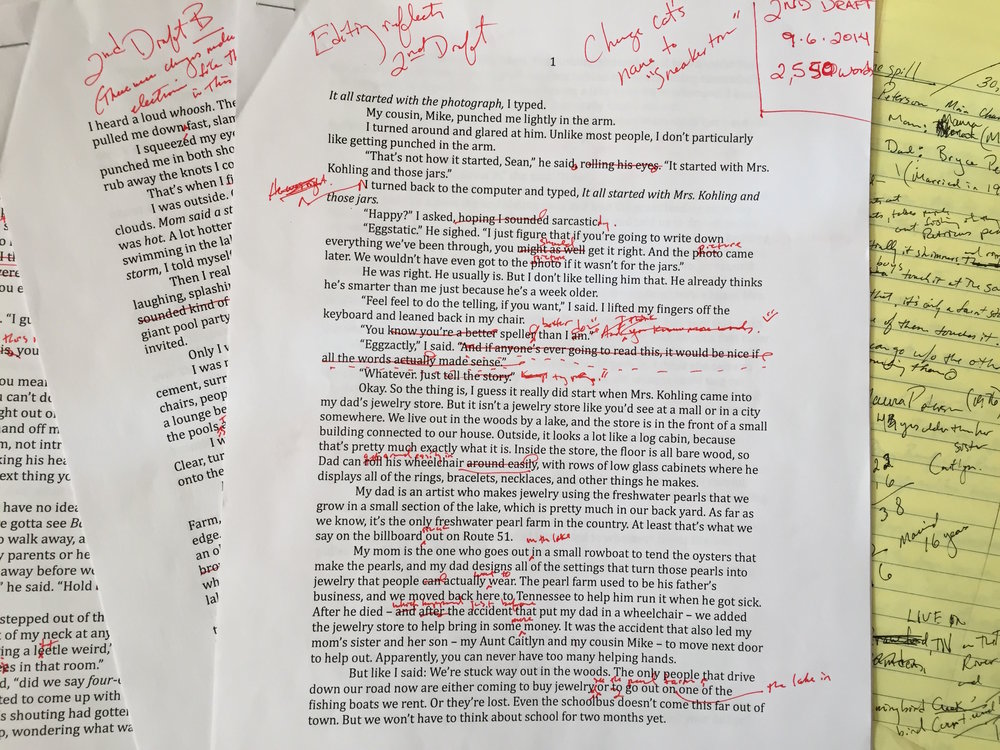
November is National Novel Writing Month (NaNoWriMo), and it’s just one week away as I write this. If you’ve yearned to write a novel, this is the time to try. You’ll be joining with thousands of other writers across the United States who devote the month to bringing their stories to life.
The following tips can help you wring the most from your writing time – whether you’re participating in NaNoWriMo or simply devoting a concentrated month or two to getting a story out of your head and onto the page.
Know your characters. Brainstorm specific characters’ traits and histories before you start to write. Sure, it can be fun to dive in and discover who these people are as you work your way through their story. But if you only have a limited amount of time, it pays to have the details ironed out before you begin. Besides, the better you know your characters, the less likely it is that they’ll do something “surprising” as you write. . . and cause your book to veer off on unproductive and time-swallowing tangents.
Know your basic story. It’s been said that first drafts are where we discover what our story and themes are; subsequent drafts are where those elements get developed and honed. But you can save yourself some work come December and January if you begin your novel with a rough idea of where you’re going and how you think you’ll get there.
For instance, when I began my middle-grade novel, The Timespill, I knew at the outset what my narrator’s main goal was, what the climactic chapter would include, and, ultimately, how the story would end. I didn’t know exactly how I’d wind up there – and there were unexpected (and sometimes frustrating) revelations along the way – but I knew what I was working toward.
Make a chapter-by-chapter outline. When I spent three years writing my adult novel, Lost Time, I didn’t bother outlining. I let the book develop as it went along. As a result, it took me three years to finish the thing! But when I decided to devote this past September to writing a middle-grade novel from start to finish, I knew an outline would be essential for success. I didn’t have time to mess around or get sidetracked.
Outlining the novel helped me play with the scope of the story before getting down to the writing. Given the length I was shooting for (40,000 words), I mapped out how many chapters I’d need to get there. And since I wanted a game-changing plot complication halfway through – to help drive the second part of the book – I figured out where that needed to happen.
An outline doesn’t have to be detailed or restrictive. And you can ignore it if the story dictates. But if you’ve taken the time to prepare an outline, you’ll at least have a useful roadmap for when you need it. And you’ll know what you need to do next whenever you have the time to write.
Set reasonable goals. If you’ve never attempted writing fiction before, cut yourself some slack; it’s unreasonable to expect to go from 0 to 80,000 words in a single month. Never mind that we’re not just talking about typing. Character development, plot intracacies, research – they all require time and attention.
When I devoted September to writing The Timespill, my goals were to write five days a week and to produce an 1,800-2,500-word chapter every writing day. That would get me to my goal of a 20-chapter, 40,000-word novel with two writing days left over, just in case I needed them. (Turns out, I ended up with 21 chapters, but I’d generated so much momentum that I finished four days early.)
You won’t likely have time to polish/revise much of what you write if you’re going to stick to a one-month schedule. That’s fine. The point of NaNoWriMo – or any writing month, for that matter – is to commit to daily work that helps turn your novel-writing dream into reality. Best-case scenario: After a month, you’ll have a solid first draft of a middle-grade or YA novel – or a strong foundation for building a longer adult novel.
In my case, after writing The Timespill in September, I set aside October for two stages of revisions and for getting my “final” draft into the hands of a few objective readers. By October 21, I was able to send a polished manuscript (essentially my third draft, with minor fourth-draft changes) to my agent.
Writing a novel is hard work. Doing it in one month is kind of crazy. But if you think of yourself as a writer, all of the “crazy” is definitely worth it. I can’t tell you how satisfying it feels to type “End” at the conclusion of a story you’ve been dying to tell.
Here’s hoping you find your own happy ending.